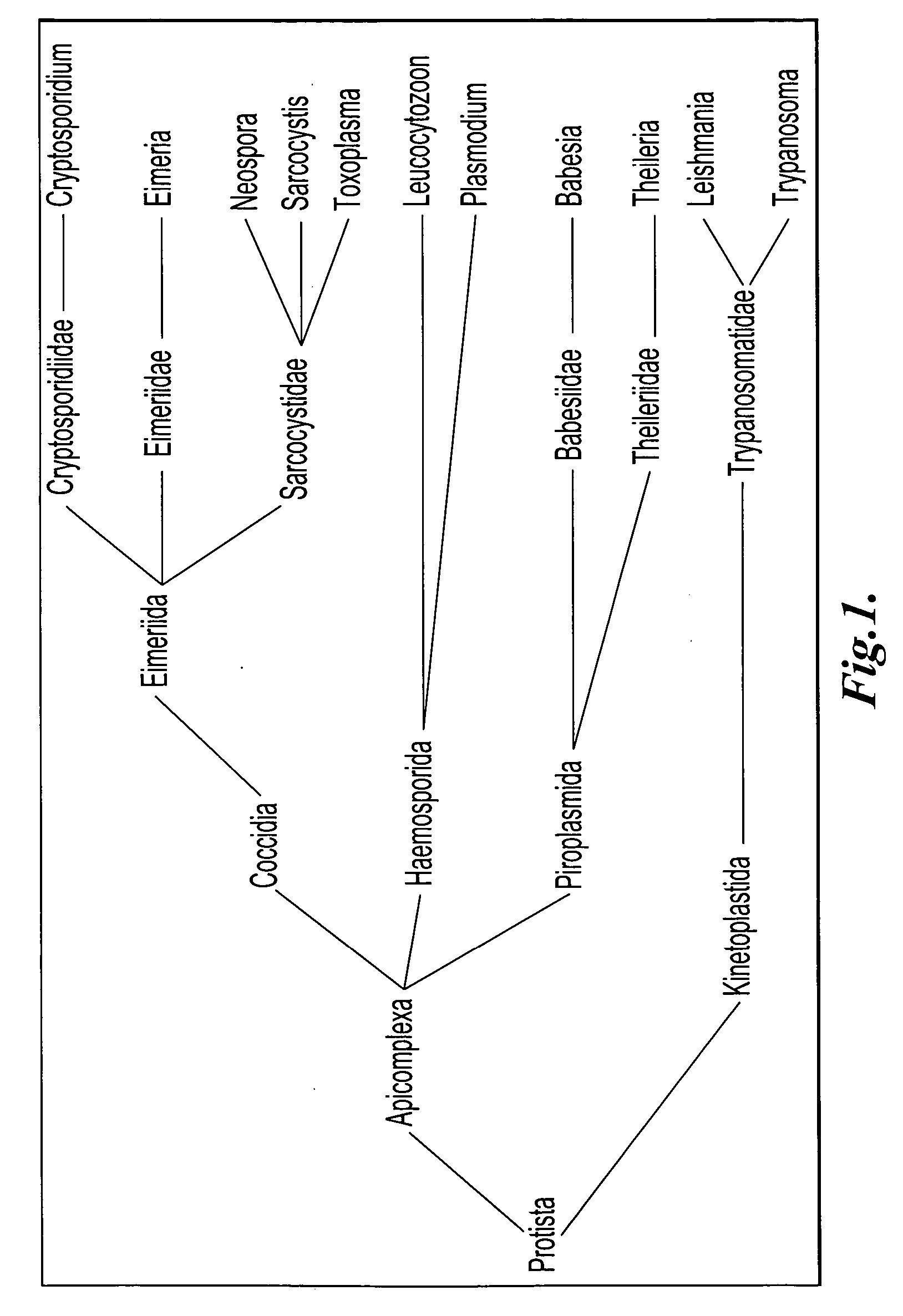Live genetically engineered protozoan vaccine
a technology of genetically modified protozoa and vaccine, which is applied in the field of live genetically modified protozoa organisms, can solve the problems of severe impact on economic development in endemic regions
- Summary
- Abstract
- Description
- Claims
- Application Information
AI Technical Summary
Benefits of technology
Problems solved by technology
Method used
Image
Examples
example 1
[0090] This Example describes a method for inducing an immune response by administering live Plasmodium parasites that are genetically engineered to disrupt the function of the LS-specific gene, UIS3 (Mueller et al. (2005) Nature 433:164-7, which is hereby incorporated by reference; see also Ménard (2005) Nature 433:113-4; Waters et al. (2005) Science 307:528-30).
[0091] We hypothesized that inactivation of UIS genes for which expression is restricted to pre-erythrocytic stages could lead to attenuation of the liver stage parasite, without affecting the blood stages or mosquito stages. We focused on a gene called UIS3 that encodes a small conserved transmembrane protein (FIG. 2). UIS3 was expressed in infectious sporozoites (Kaiser et al. (2004) Mol. Microbiol. 51:1221-32) and we determined that it was also expressed after sporozoite infection of livers in vivo (data not shown). UIS3 of rodent malaria parasites (accession number EAA22537) and UIS3 of the human malaria parasite P. fa...
example 2
[0100] This Example describes a method for inducing an immune response by administering live Plasmodium parasites that are genetically engineered to disrupt the function of the LS-specific gene, UIS4 (Mueller et al. (2005) Proc. Natl. Acad. Sci. U.S.A. 102(8):3022-7, which is hereby incorporated by reference).
[0101] Here, we disrupted another Plasmodium protein with a critical function for complete liver stage development. UIS4 (upregulated in infective sporozoites gene 4) is expressed exclusively in infective sporozoites and developing liver stages. Targeted gene disruption of UIS4 in the rodent model malaria parasite Plasmodium berghei generated knockout parasites that complete the malaria life cycle until after hepatocyte invasion. UIS4 knockout parasites transform into early liver stages. However, they are severely impaired in further liver stage development and can only initiate blood stage infections when inoculated at high sporozoite doses. Immunization with UIS4 knockout sp...
example 3
[0110] This Example describes a representative method for making a UIS3-like knockout in P. falciparum.
[0111] The P. falciparum UIS3 gene is targeted for disruption by replacement via a well-established double-crossover recombination strategy (Thathy & Ménard (2002) Gene targeting in Plasmodium berghei, in Methods in Molecular Medicine, Vol. 72: Malaria Methods and Protocols (Doolan, ed.), Humana Press). The UIS3 locus is replaced by a fragment containing the 5′ and 3′ untranslated regions of the P. falciparum UIS3 open reading frame, each flanking the human dihydrofolate reductase (hdhfr) selectable marker. Sequence data for the P. falciparum UIS3 locus were obtained from the PlasmoDB database (www.plasmodb.org). The accession number for the coding sequence of P. falciparum UIS3 is PF13—0012 (12) and the location of the exon within chromosome 13 is 123930-124619 on the minus strand. The P. falciparum UIS3 rep1 fragment extends from nucleotides 124609-125594, and the rep2 fragment ...
PUM
 Login to View More
Login to View More Abstract
Description
Claims
Application Information
 Login to View More
Login to View More - R&D
- Intellectual Property
- Life Sciences
- Materials
- Tech Scout
- Unparalleled Data Quality
- Higher Quality Content
- 60% Fewer Hallucinations
Browse by: Latest US Patents, China's latest patents, Technical Efficacy Thesaurus, Application Domain, Technology Topic, Popular Technical Reports.
© 2025 PatSnap. All rights reserved.Legal|Privacy policy|Modern Slavery Act Transparency Statement|Sitemap|About US| Contact US: help@patsnap.com


